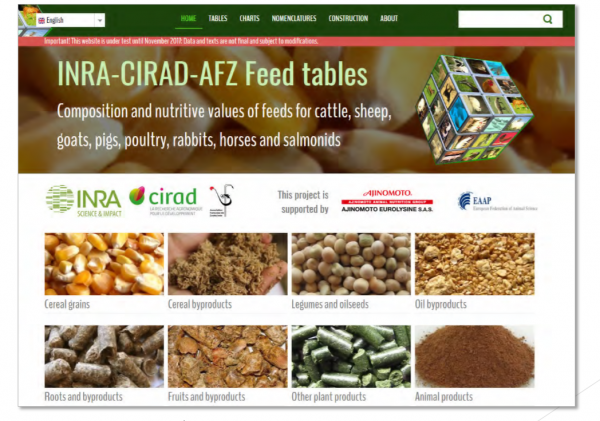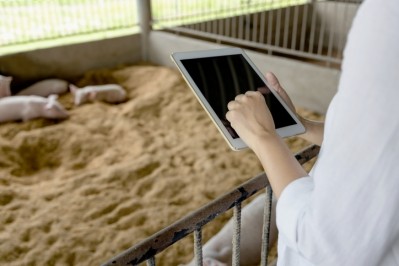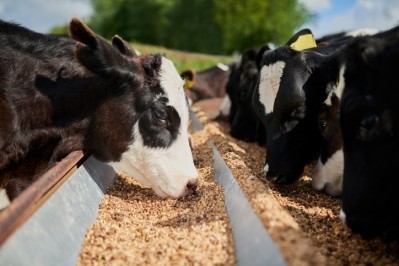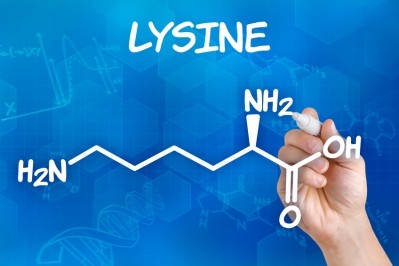Dispatches from Ajinomoto/EAAP amino acid academy, Paris
Industry finally gets revised feed value tables

FeedNavigator spoke to Gilles Tran, engineer/project manager, Association Française de Zootechnie (AFZ), about the reasons behind the move to revise the original tables. He was speaking on that subject at the first amino acid academy run by EAAP and Ajinomoto in Paris last week.
“It has been 15 years since the first INRA feed tables were created. We have had lots of new data [in the French feed database] and lots of new nutritional concepts in that time, so we have had plenty of queries from industry wanting to know what we were doing regarding an upgrade,” he told us.
The new tables reflect the latest INRA feed system for ruminants, Systali, which consists of data on digestive, metabolic and productive responses of ruminant to diets, said Tran.
Systali, according to INRA, is based on flows of nutrients and multiple animal responses to these flows, and can be used on enlarged fields of application.
“We timed the release of the new feed tables to correspond with the publication of the new ruminant system.
“We updated all the values for other animals as well, using data from the French feed database,” continued Tran, who coordinated the project on behalf of INRA, AFZ and new partner, CIRAD, an agency with experience in tropical countries.
Environmental impact data of feed materials
The revised tables also include, for the first time, environmental footprint data on feed ingredients used in animal production in France generated by the team involved in the ECOALIM study. That study assessed ingredients in relation to their impact on climate change, acidification, eutrophication, their non-renewable and total cumulative energy demand, phosphorus demand, and land occupation.
There is double the data in the French feed database today compared to 2002, said Tran. "However, now we are better able to sort the data and decide which data are valuable and which are not."
As well as reflecting the additional data from scientific publications and laboratories that has accrued over the past 10 years, the new tables take account of the feed materials that animals are fed today, and not just those of 15 years ago, he added.
“We had 100 raw materials in 2002, now we have over 200 ingredients. We discarded some of the older products, and we have considered raw materials such as biofuel by-products, and some insects, amongst others.”
Additional drivers for the update included the globalization of the demand for feed information and interest from emerging countries, so the team included data on feeds for developing regions, such as fruit byproducts, sugarcane byproducts and rice byproducts, he said.
Worldwide reference
Asked then whether the new tables can be used as a reference globally, he told us: “Essentially yes. It is true that the bulk of the data comes from European companies, but the old tables were used around the world.”
The new tables will be available as a freely accessible website, with the final version likely to be ready by the end of November, pending corrections and some amendments.
Tran said the internet has become mandatory for optimal dissemination, with a large, worldwide audience. Online publication is adaptable, reactive, and flexible, with no size constraints, he added.
“We still have to fine tune some of the data - the rabbit values - and we may have to add some information about amino acid digestibility in poultry. INRA is now looking at the data to ensure everything is all right.
“The principle is that we are going to do a progressive roll out. We will put this big set of data out now. Then, AFZ will run a workshop [on the tables] possibly at the beginning of next year.”
Ajinomoto Eurolysine and EAAP supported the development of the new feed tables, with the project taking over two years to realize.
Reliable feed values
The objective of any feed table is to provide the compound feed manufacturing industry with reliable values of feed for inclusion in the feed matrix, said Tran.
A nutritionist in a feed manufacturing company looking to replace soy in a feed formulation would use the table to assess the net energy for pigs or the metabolizable energy for poultry or the digestible amino acids within a feed material, he explained.
“They could use the INRA-AFZ-CIRAD table as a reference, or to see how their own feed values compare. Of course, these are table values and so they do not correspond exactly with what is in a manufacturer’s silo.
“It depends on the user, of course. Farmers, mixing feed on site, may rely totally on the values provided within the INRA tables. It is the most reliable thing they have. Laboratories may use the table for reference as well.”













